By Virginia Off-Road Staff
Autumn in the Appalachians
When the October sun hangs low over the Blue Ridge and the hardwoods burn with orange and gold, there’s no better place to test both your rig and your patience. Leaves blanket the ground, mud thickens overnight, and the crisp air carries the scent of pine and cold earth. This is the season when Virginia’s trails reveal their true character—and when newcomers learn that surviving here takes more than a loud engine and oversized tires.
The Blue Ridge doesn’t reward brute force. It rewards finesse, planning, and respect.
Where Terrain Becomes the Teacher
In places like Potts Mountain, Bald Mountain, Spearhead’s Jawbone Trail, and Parker’s Gap, you don’t find the wide-open desert climbs of the West or the slickrock of Utah. You find tight switchbacks hemmed by oak and rhododendron, hidden washouts, and wet clay that clings to tread like glue.
Every turn tests judgment. One side may drop into a ravine; the other hides a tree root waiting to unseat a tire. Power alone won’t save you. Precision will.
Virginia’s trails teach patience. They remind drivers that momentum is a tool, not a crutch. They demand attention to traction, throttle control, and teamwork. You learn to trust your spotter, read the soil, and anticipate what lies beyond the next bend.
The Myth of “More Power”
In off-road culture, it’s easy to get swept up in the idea that bigger means better—lift it higher, lock it tighter, crank more horsepower. But anyone who’s spent a rainy weekend in the Jefferson National Forest knows torque doesn’t mean much when your tires can’t find grip.
What truly conquers Virginia terrain is balance. A properly tuned suspension that keeps contact with the ground. Tires that shed mud efficiently. A driver who knows when to feather the gas and when to stop altogether.
Veteran members of Virginia Off-Road (VAOR) often joke that “the most powerful tool on the trail is your brain.” It’s not far from the truth.
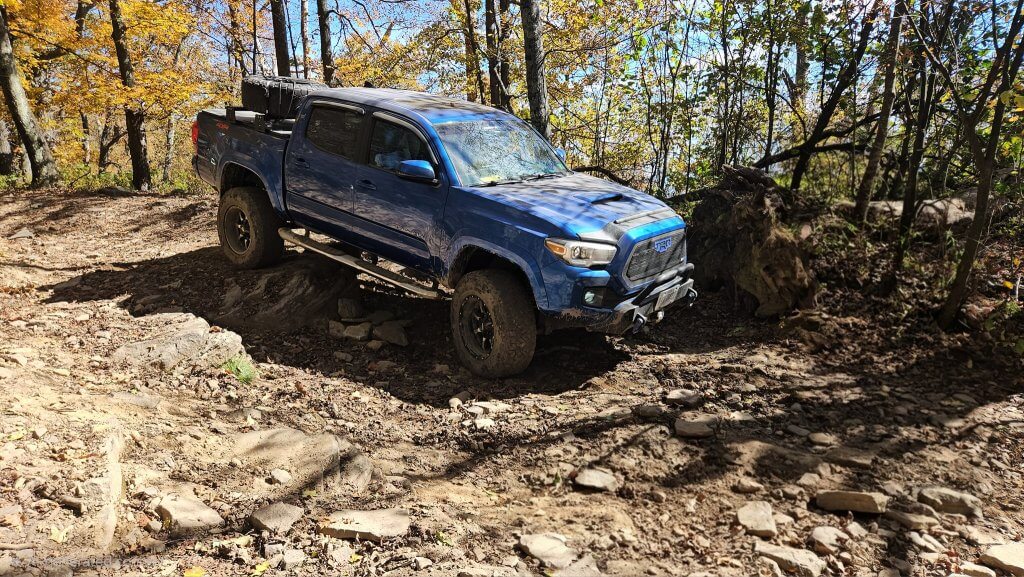
Smart Builds for Smart Terrain
Virginia’s landscape rewards well-thought-out builds rather than overbuilt rigs.
Tires: All-terrain or mud-terrain with strong sidewalls and self-cleaning tread patterns are essential. The Blue Ridge clay can clog a cheaper tire in seconds.
Suspension: Two- to three-inch lifts offer clearance without sacrificing stability on uneven forest roads. Articulation matters more than altitude.
Recovery Gear: Every vehicle should carry a winch rated at 1.5 times its gross weight, a set of soft shackles, recovery straps, traction boards, and a shovel.
Lighting: With daylight fading early in fall, reliable LED lighting is less luxury than safety feature.
Armor: Skid plates and rock sliders protect critical components from roots and boulders hidden under leaves.
Communication: CB or GMRS radios keep convoys coordinated where cell service fades—a frequent reality in the Blue Ridge.
What you don’t need is excessive lift or racing-style modifications that make your rig top-heavy. Virginia trails aren’t about speed—they’re about endurance and control.
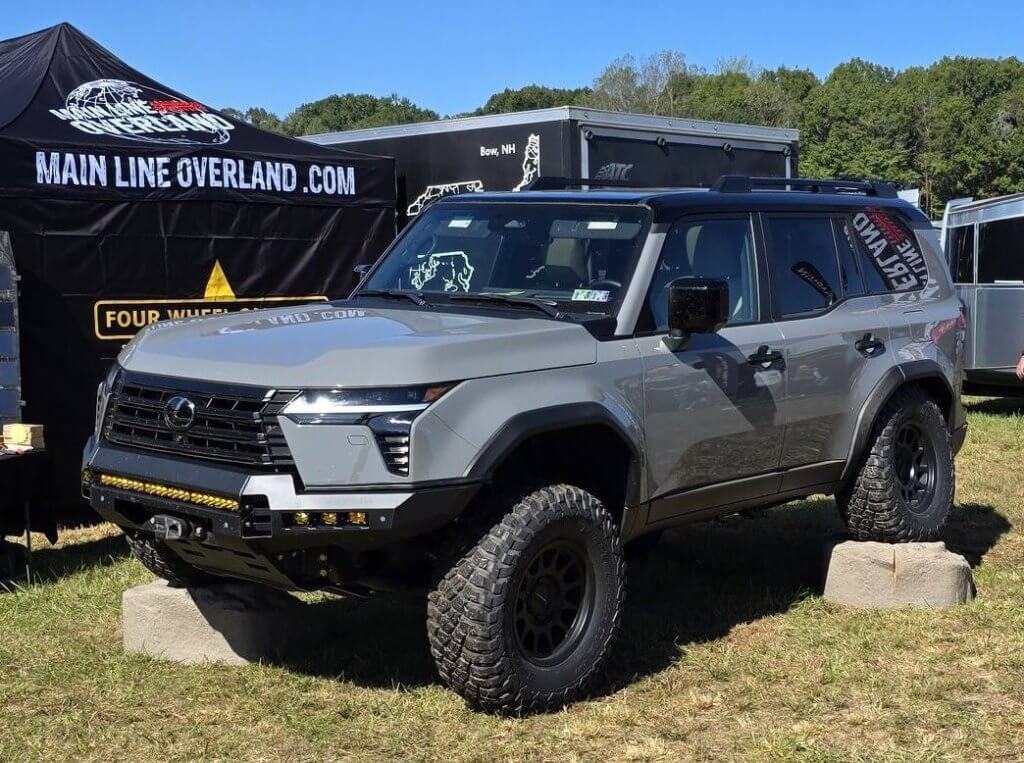
Learning the Land
Each region of the Commonwealth offers its own classroom.
- Southwest Virginia: Steep grades and coal-country ridgelines teach throttle discipline and line selection.
- Shenandoah Valley: River crossings and floodplain tracks demand water-reading skills.
- Central Virginia: Clay-heavy soil tests patience, traction management, and cleanup commitment.
- Coastal Plains: Sand trails and marsh crossings highlight tire pressure and momentum management.
Understanding local soil composition and drainage patterns turns a good driver into a great one. It’s also key to minimizing environmental damage—a central focus of VAOR’s OHV Safety & Ethics Course.
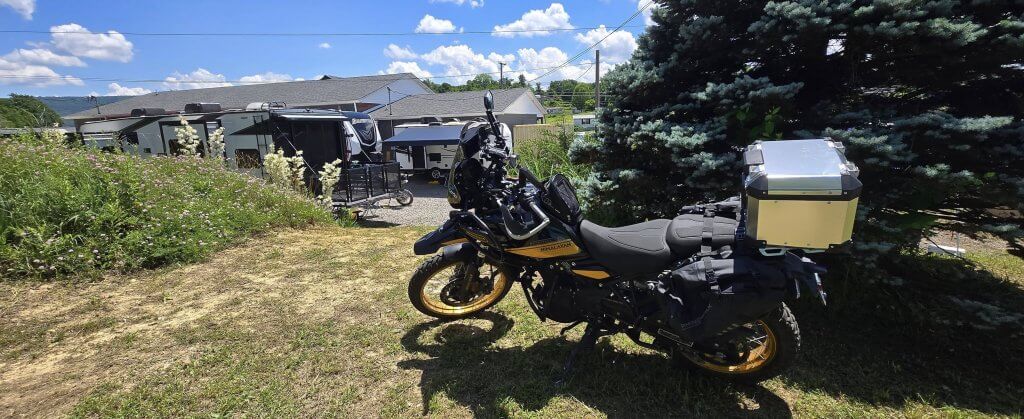
Education Before Ego
That phrase—education before ego—has become something of a mantra among VAOR instructors this year. Through in-person courses and online guides, they’re teaching a new generation of off-roaders to approach the sport as a craft.
Participants practice spotting, recovery, and trail etiquette. They learn how to navigate multi-use routes shared with hikers, equestrians, and cyclists. They discuss topics that used to be afterthoughts: torque specs on recovery points, the physics of winching, even first-aid basics for remote settings.
The payoff is tangible. Since VAOR launched the updated version of the course last spring, local rangers have reported fewer off-trail incidents and less rutting damage. That’s not coincidence—it’s culture shift.
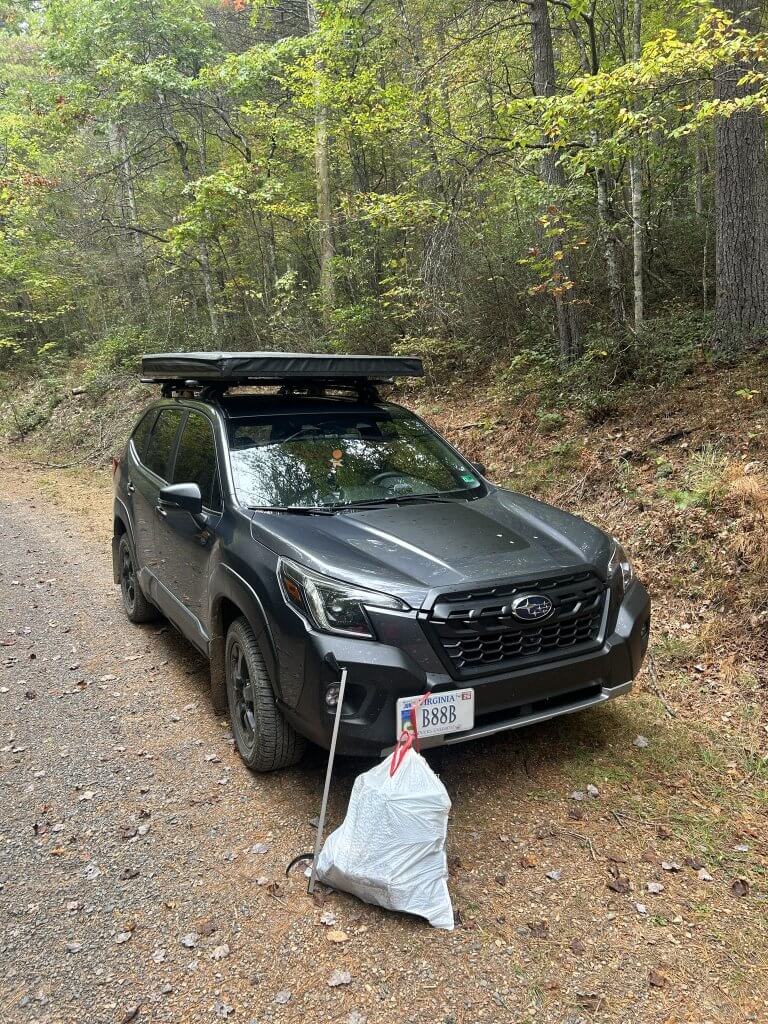
When the Weather Turns
Virginia’s fall weather adds another layer of complexity. One day the trails are bone-dry; the next they’re rivers. Cold nights form frost that melts into slick clay by noon.
Experienced drivers adapt. They air down tires to widen contact patches. They carry portable compressors for the trip home. They pack layered clothing, extra straps, and hot coffee because a 20-minute recovery can easily stretch to two hours when the temperature drops.
Trail reports shared on VAOR’s Interactive Map have become essential reading before every weekend trip. Updated daily by volunteers, the map flags blocked roads, fallen trees, or sections temporarily closed for wildlife management.
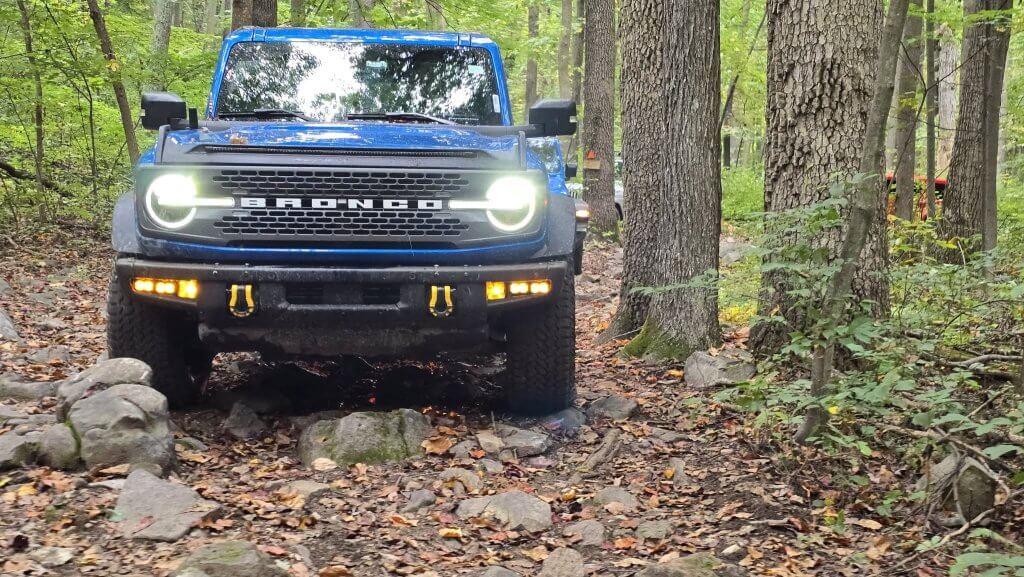
Community in the Cab
There’s another reason horsepower takes a back seat here: camaraderie. When trails narrow and conditions worsen, everyone depends on each other.
A stock 4Runner may lead a lifted Wrangler through a water crossing because its driver scouted the line first. A Bronco driver might lend traction boards to a Tacoma that slipped on a wet root. Rival brands disappear when you’re ankle-deep in mud trying to pull cable together.
This shared struggle forges friendships faster than any social club could. Many of VAOR’s most dedicated volunteers started as strangers helping each other during a trail jam. Today, they run cleanup crews and mentor newcomers.
The Fall 2025 Scene
This autumn, the Blue Ridge is buzzing. The Trail to 500 membership campaign has drawn hundreds of new enthusiasts eager to learn. VAOR’s Adopt-a-Trail teams have logged thousands of maintenance hours since spring.
At local meetups, talk centers on responsible builds rather than competition. Drivers compare recovery techniques, not dyno charts. And more families than ever are turning up with kids eager to earn their first Off-Road Explorer badge.
It’s not just about driving anymore—it’s about belonging.
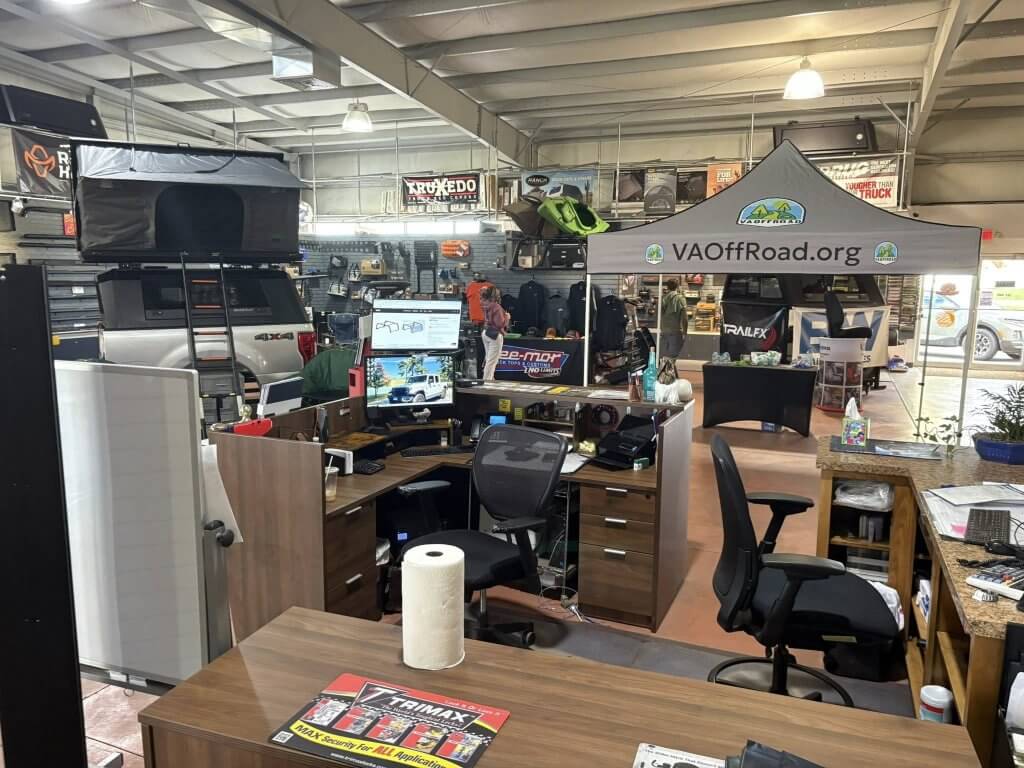
Local Businesses, Local Knowledge
Shops like Bull Run 4×4, See-Mor Customs, and Blue Ridge Overland Gear understand the terrain better than anyone. They’re not pushing oversized lifts or aggressive tires just for show—they’re advising builds tailored to Virginia’s backcountry.
This partnership between local industry and nonprofit education has created a feedback loop: better-equipped drivers cause less trail damage, which keeps routes open longer, which brings more business to those same shops.
The result is a sustainable ecosystem—a rare sight in the modern off-road world.
Why the Blue Ridge Demands Respect
Beyond the technical challenge, there’s something almost spiritual about Virginia’s mountains. The forests are ancient, the ridgelines unbroken. When you crawl along a rutted forest road under a canopy of maples glowing like fire, it’s impossible not to feel humbled.
That humility is the secret ingredient in every successful build. Respect for terrain leads to caution; caution leads to care; and care keeps trails open for the next generation.
Common Mistakes New Drivers Make
Even seasoned drivers can fall into traps here. VAOR instructors highlight a few:
- Ignoring tire pressure. Running too high leads to wheelspin and erosion.
- Over-accelerating. Spinning tires dig ruts that trap others later.
- Neglecting scouting. Walking an obstacle before attempting it prevents expensive repairs.
- Traveling solo. In Virginia’s dense woods, one breakdown can mean a long night.
- Leaving tracks in wet areas. It’s not just bad etiquette—it’s the fastest way to get a trail closed.
Avoiding these mistakes isn’t about rules; it’s about preserving opportunity.

Technology on the Trail
Modern off-roaders blend analog skill with digital tools. GPS waypoints, topo maps, and VAOR’s condition tracker keep drivers informed. Portable solar panels charge radios; dash cameras record recoveries for educational use.
This fall, VAOR’s tech team is testing a new “Trail Badge System” that syncs your completed routes with the organization’s database. Each verified report earns points toward digital awards and real-world recognition. Gamifying responsibility might sound modern, but it’s rooted in an old truth: people protect what they take pride in.
Family Builds and Future Drivers
The 2025 trend toward smaller, smarter builds dovetails with another positive shift—families hitting the trail together. Instead of high-horsepower mud trucks, parents are turning to mid-size rigs with rooftop tents, safety gear, and space for kids.
VAOR’s Off-Road Explorers program encourages this by giving children trail passports to stamp after each trip. They learn basics of navigation, litter collection, and wildlife respect. The next generation is being raised not just to drive but to care.
When Less Really Is More
By late November, when frost paints the high ridges and the forest floor crunches under tire tread, the drivers still out there aren’t chasing power—they’re chasing peace. The hum of low-range gears through an empty hollow is meditative. The rig that can creep quietly, that can stop without sinking, that can idle while you take in the view—that’s the real trophy.
Virginia’s off-road scene has matured past the noise. It’s becoming what the mountains always wanted it to be: mindful, skilled, and sustainable.
Preparing for Winter
As fall winds down, VAOR encourages members to prep vehicles for cold-weather use. Check fluids, clean winches, and inspect recovery gear. Trails like Bald Mountain and German River Overland remain accessible in light snow, but only for those ready for ice and isolation.
Winter runs require self-reliance—another reason education trumps horsepower. A rig with a stock engine but a trained driver will outlast a high-powered build driven carelessly every time.
Join the Blue Ridge Way
If there’s a moral to Virginia off-roading, it’s this: Capability isn’t built under the hood—it’s built behind the wheel.
The Blue Ridge teaches humility. The mud teaches patience. The community teaches compassion. And together, those lessons create the kind of driver who can explore without destroying, enjoy without boasting, and lead without shouting.
This fall, as you air down at the trailhead and watch mist roll through the valleys, remember: the mountains don’t care how much horsepower you have. But they’ll always reward how much heart you bring.
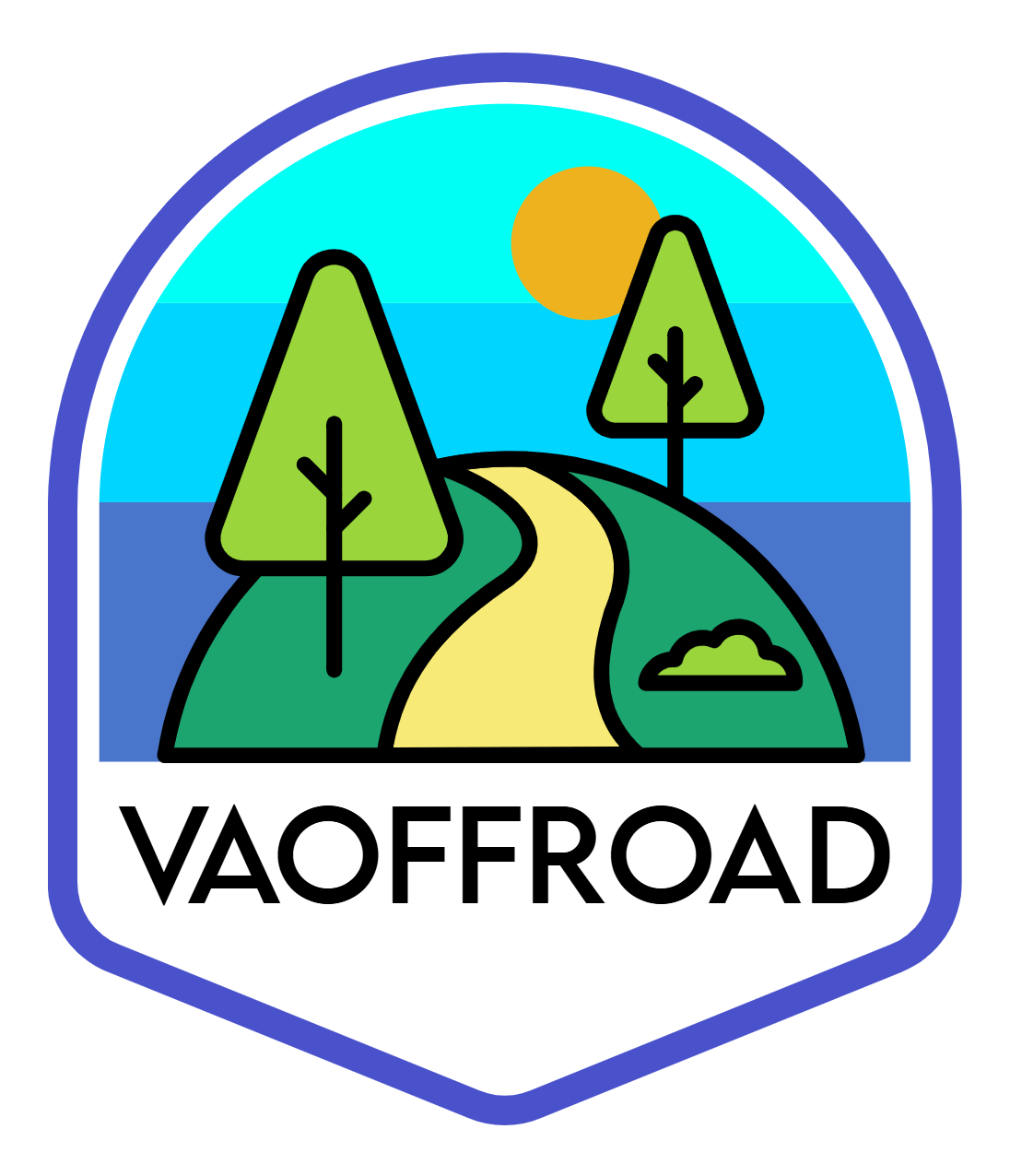
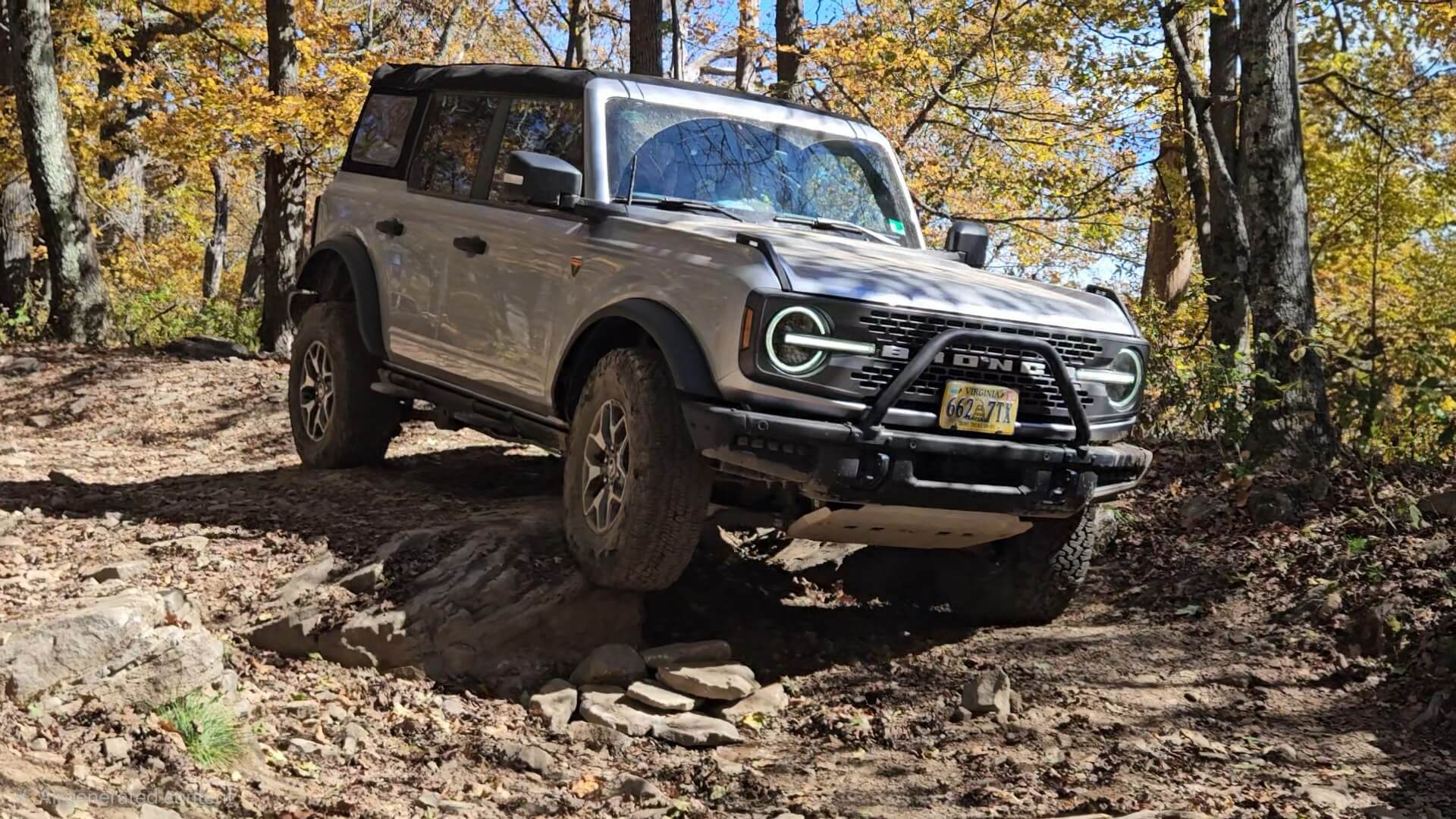

No responses yet